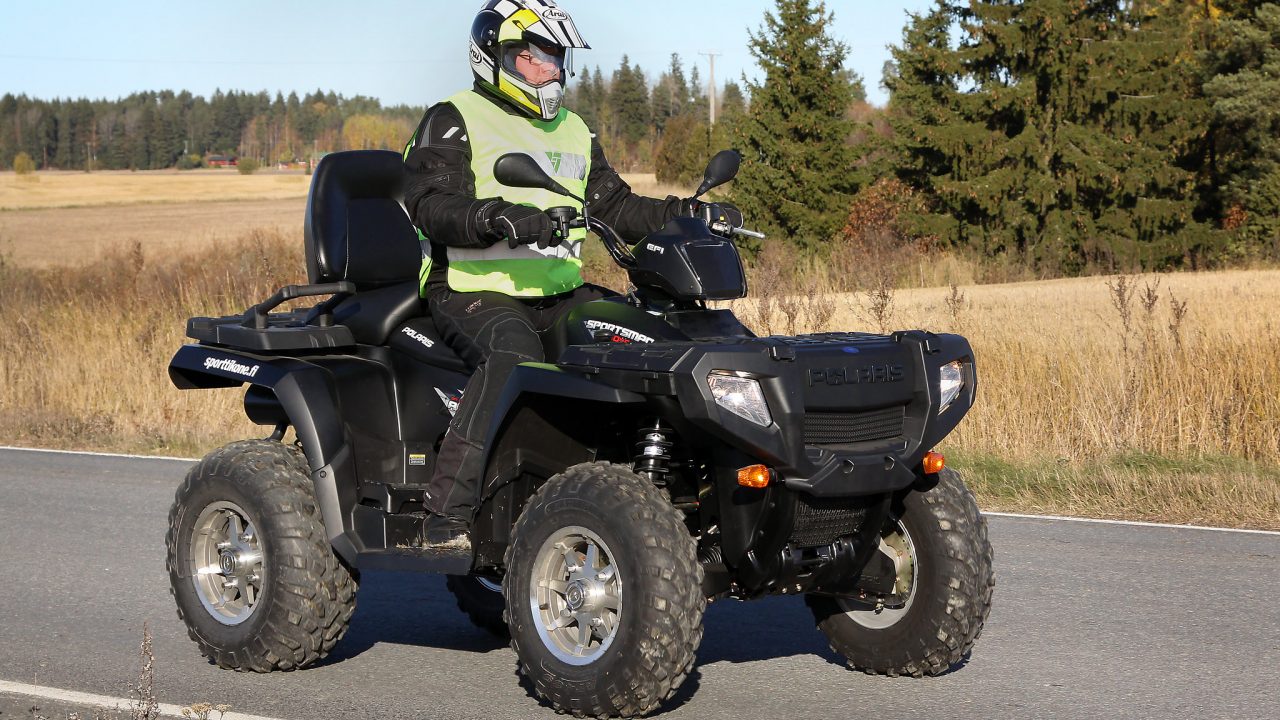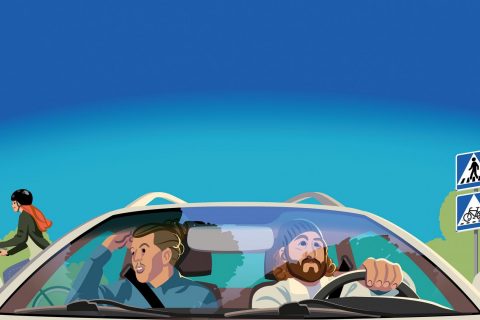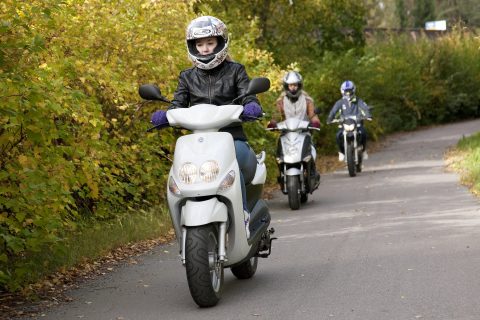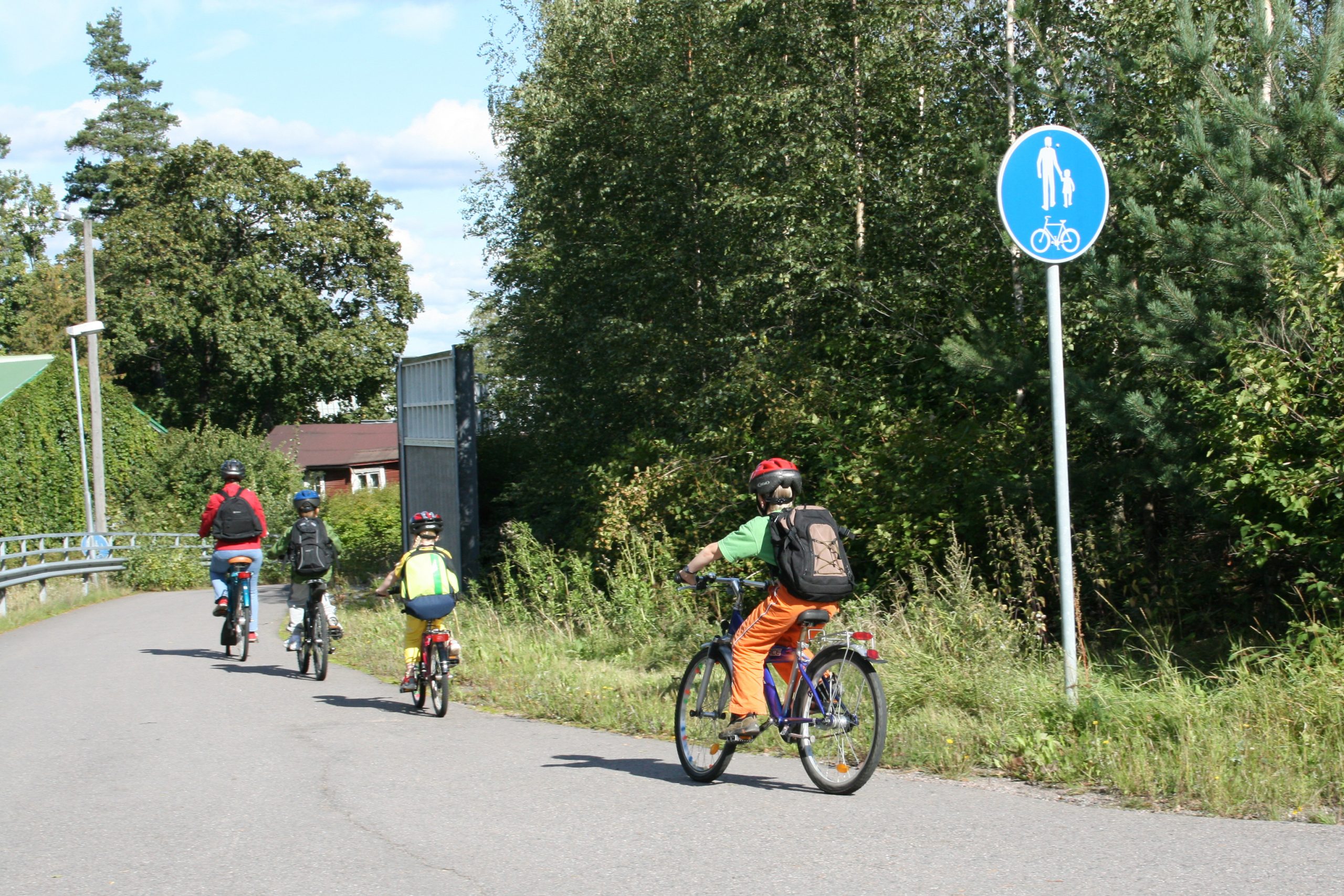
All-terrain vehicles
The all-terrain vehicle was originally designed for off-road use. An increasing number of all-terrain vehicle types are currently in road traffic use. The number of ATV models classified as category T tractors in particular has increased a great deal in recent times.
All all-terrain vehicles must be covered by motor insurance when driving on or off the road. There must also be motor insurance for driving unregistered all-terrain vehicles.
The use of a motor vehicle in the terrain always requires permission from the landowner or land holder.
The driver and passenger must wear an appropriate protective helmet. The use of the protective helmet also applies to the driver and passenger of the tractor ATV. The safety helmet does not have to be worn when driving an ATV with a bodywork or rollbar or in certain situations related to work assignments. The Central Organization for Traffic Safety in Finland recommends that a helmet is always worn when driving an ATV.
The driving outfit is also an important safety factor. A good driving outfit prevents serious injuries in the event of an accident and provides protection against the cold, the wind and moisture. The driver and passenger’s colourful driving outfit will help to distinguish all-terrain vehicles from other traffic and improve their visibility.
All-terrain vehicle types
All-terrain vehicles are classified according to their use and type approval into two main categories:
- An off-road all-terrain vehicle that may only be used in the road area in special cases. For more information on this, see Section 157 of the Road Traffic Act.
- All-terrain vehicles approved for road traffic are light or heavy quadricycles. It is also permitted to circulate in traffic with an ATV approved as a tractor.
Some all-terrain vehicles are classified as L-category vehicles for use on the road. These include the following:
- L6e-A lightweight highway all-terrain vehicles. The maximum structural speed of the vehicle is 45 km/h. Driving licence category AM, age limit 15 years.
- L7e-A highway all-terrain vehicles. Driving licence category B.
- L7e-B highway all-terrain vehicles. Driving licence category B.
Category T tractor all-terrain vehicles may be classified in the following categories:
- T1-a, T2-a, T3-a or T3 tractor ATV. The maximum structural speed of the vehicle must not exceed 40 km/h. Driving licence category T, age limit 15 years.
- Category T1-b and T2-b tractor ATV. Structural speed of the vehicle above 40 km/h but not exceeding 60 km/h. Driving licence category T, age limit 15 years.
- Category T3-b tractor ATV. Structural speed of the vehicle above 40 km/h but not exceeding 60 km/h. Driving licence category AM 121, age limit 15 years.
- Category T1-b, T2-b and T3-b tractor ATV. Structural speed of the vehicle above 60 km/h but not exceeding 80 km/h. Driving licence category B, age limit 18.
The mass of category T1 and T2 tractor ATVs in running order exceeds 600 kg. The mass of category T3 tractor ATVs in running order must not exceed 600 kg.
NOTE! Categories A1, A2, A and B include the category T driving licence.
Read more information about different driving license categories. (Opens in a new window)
In special situations specifically permitted by the law (Section 157 of the Road Traffic Act), an all-terrain vehicle may drive temporarily in the road area with the necessary caution. The special conditions are as follows:
- An all-terrain vehicle may cross a road or a bridge. The driver must hold at least a category B driving licence when crossing the road or driving in the road area in exceptional cases.
- The transport task or terrain conditions make it unreasonably difficult to drive in the terrain.
- Driving in the road area must be considered necessary for safe crossing of the road (for example, the driver may leave a sharp curve for a straighter section of the road for crossing it).
- The off-road ATV must be refuelled at a service station located in the immediate vicinity of its operating terrain.
- An all-terrain vehicle must be moved to or from the terrain at a parking space intended for general traffic.
Risks of all-terrain vehicles
- The ATV’s sensitivity to falls.
- Excessively low air pressure is used in tyres, and the tyres are unsuitable for driving on the road.
- The speed is too high for the situation and the conditions.
- The driver is under the influence of alcohol.
- The driver does not wear a protective helmet.
- The driver is unwilling to observe traffic regulations.
- The driver is inexperienced.
ATV accidents
Accidents involving all-terrain vehicles are difficult to analyse in accident statistics. It is difficult to determine the number of ATV accidents, as the definition is not clear. The current statistical methods do not sufficiently support the statistics on off-road traffic accidents.
The typical features of the most serious ATV accidents include the following:
- The deceased is the driver of the vehicle and most often male
- In most cases, the ATV accident fatality is 46–65 years old
- The ATV falls in an accident
- Swerving is a common type of accident
- The driver did not wear a protective helmet
- The vehicle is an off-road ATV
- The vehicle has been driven under the influence of alcohol.
The most common fatal accidents are falling or swerving on an ATV. When swerving occurs, the vehicle often starts tossing about, and the driver loses control of the vehicle. When driving off-road, the most common type of accident is a fall.
In fatal accidents, many drivers were under the influence of alcohol. Most of them had a blood alcohol concentration of at least 1.2%.
In fatal accidents, the most common cause of death is injury to the skull or chest. The injuries are most commonly located in the shoulder or upper limbs, in the area of the neck or spine, or in the pelvic area.




